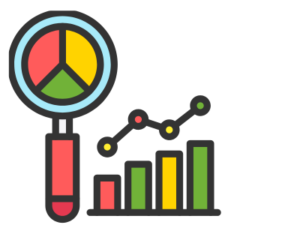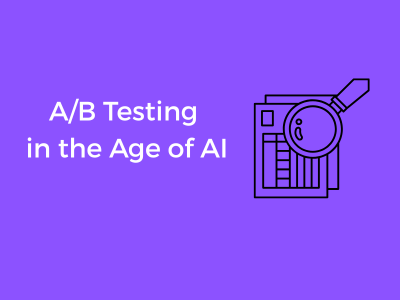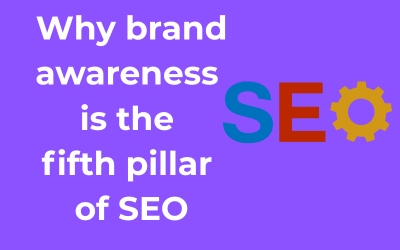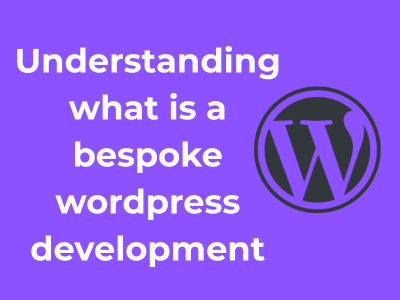Split testing, often called A/B testing, has long been a go-to method for optimizing everything from marketing campaigns to user experiences. The premise itself is straightforward: showcase two (or more) options, see which one performs better, and let the data guide your decision. It’s a strategy rooted in simplicity and experimentation, but does it still reflect our rapidly-evolving digital landscape? The truth is, traditional A/B testing has its limitations, and that’s where Artificial Intelligence (AI) steps in to revolutionize the game.
The Shift from Linear to Dynamic Testing
Classic split testing is like a snapshot—it captures user preferences at a specific point in time under static conditions. But let’s be real: consumer behavior is anything but static. Modern users interact with digital content across various channels and moments, influenced by a myriad of factors like location, shopping habits, or even the time of day. Enter AI, with its ability to process vast data sets in real-time and identify powerful patterns. By introducing AI-driven techniques, split testing evolves from a linear process to a dynamic engine, fine-tuning variables mid-experiment and adapting to live outcomes.
Why AI Makes Better Test Designers

A significant advantage of incorporating AI into split testing is its intuitive ability to predict and preempt user behavior. AI analyzes hundreds—sometimes thousands—of parameters, narrowing down what really influences your audience’s choices. Instead of manually setting up tests and hoping for useful insights, AI can automate much of the process by quickly predicting which variants have the highest chance of success. This reduces not only time but also human error—a common hurdle in traditional setups.
Efficiency Through Experimentation
Think of AI like a turbocharger for your testing strategy. What would take weeks or even months to conclude through manual split tests can often be achieved in days, thanks to AI’s agility. It’s particularly useful in fast-paced industries where waiting for results isn’t just inconvenient but could result in missed opportunities.
What Makes AI a Trustworthy Partner?
Here’s where things get exciting. AI doesn’t just automate processes; it informs smarter decision-making. With technologies like machine learning, AI becomes more accurate over time, refining its capabilities as it learns from each experiment. Businesses no longer have to work with limited insights or gut feelings. Instead, the AI backs up its suggestions with solid, actionable data.
Key Benefits of AI-Powered A/B Testing
- Speed: Run multiple experiments simultaneously and reach optimal decisions faster.
- Precision: Gain insights into micro-level factors, such as subtle color changes or button placement.
- Adaptability: Adjust variables based on changing user preferences in real time.
- Scalability: Handle complex multivariate tests without getting bogged down.
As we embrace AI in this space, it’s clear that the traditional “set it and forget it” model of split testing is fading into the past. By leveraging smarter tools like LangStag, businesses can create a future where trial and error are not just faster but far more insightful and rewarding. So, why settle for the old way when there’s a better one knocking? The era of AI-enhanced experimentation is here—let’s welcome it with open arms.
Why Static Tests Fall Short Without Adaptive Intelligence
Imagine you’re trying to solve a jigsaw puzzle, but instead of seeing the whole picture evolve as you work on it, you only get to compare two pieces at a time with no insight about how they fit with the rest. That’s kind of what static A/B testing feels like without the adaptability of artificial intelligence (AI).
The Limitations of Traditional Split Testing
Let’s face it, static A/B testing, while revolutionary in its time, has its limitations. It does a good job of telling you whether Option A or Option B performs better in a controlled environment, but that’s about it. Life, however, isn’t static—your audience, their preferences, and market conditions are always changing. Static tests often fall short of adapting to these evolving dynamics.
Here’s why:
- Limited context: Standard A/B testing assumes that what works today will work tomorrow. But in today’s fast-paced world, preferences shift in a blink, making yesterday’s data potentially obsolete.
- Too narrow in focus: Traditional tests typically analyze one or two variables at a time, leaving gaps in understanding how multiple factors interact. What if the combination of your headline and call-to-action is what drives conversions, but you’re only testing the headline?
- Static conclusions: Once you choose a winner, that’s it—you don’t get much insight beyond the binary result of which version worked better. This approach often lacks the nuance needed for deeper decisions.
The Problem with Hitting “Pause” on Change
Static tests also face a timing dilemma. You’re often required to let these tests run their course to gather enough data. But in that period, the competitive landscape or user behavior could shift dramatically. By the time the test concludes, the winning variation might already be outdated!
For example, say you’re testing two email subject lines during a product launch. By the time you identify the “winner,” the hype around your launch might have already waned. See the issue?
AI to the Rescue: Why Adaptive Intelligence Matters
Here’s where artificial intelligence swoops in like a hero in a cape. AI takes static A/B testing into the dynamic world of adaptive testing. But what makes adaptive intelligence so special? Let’s break it down:
- Real-time learning: AI doesn’t wait for tests to finish before feeding you insights. Instead, it continuously analyzes data and adjusts in real-time, helping you take advantage of what works when it works.
- Multivariate power: AI enables scalable tests that consider multiple variables simultaneously. Want to test your headline, button color, and product image? AI can handle that complexity with ease.
- Personalization and segmentation: Not all users are the same, and AI knows that. Instead of a one-size-fits-all outcome, it can adapt results based on user segments and individual preferences.
Think of the Bigger Picture
Without AI-driven adaptability, you’re essentially working with a snapshot in a constantly moving video. AI helps you predict, measure, and pivot as needed, saving not only time but also significant resources. So, if you’re still relying solely on static tests, it might be time to rethink the approach. After all, why settle for black-and-white when AI can bring your optimization efforts into full, living color?
LangStag’s Unique Approach to Data Predictions

Hey there! Let’s talk about something super cool and honestly, pretty game-changing in the world of A/B testing – LangStag’s approach to data predictions. If you’ve been on the hunt for a smarter, faster way to make data-driven decisions, you’re in for a treat. LangStag isn’t just your run-of-the-mill AI tool; it’s something special. Let me break it down for you in the easiest way possible.
Moving Beyond the Ordinary
So, in a traditional A/B test, you create two versions of something – a webpage, an email, an ad – and see which one performs better, right? Sounds simple enough. But here’s the thing: standard A/B tests rely on static, historical data. They don’t really anticipate the ways your audience behavior could shift over time. That’s where LangStag shines. It uses predictive modeling to anticipate future patterns, not just analyze what’s already happened. As a result, you’re not just learning what worked – you’re getting insights into what will work.
Why Predictions Are the Magic Sauce
Let’s say you’re planning a marketing campaign for the holiday season. The classic testing approach might give you insights into how customers behaved last year or even last week. But here’s the juicy bit: LangStag uses AI-driven predictions that take changing trends, real-time data, and external factors into account. It’s like having a crystal ball for your strategy – a crystal ball powered by machine learning, of course!
Why does this matter? Because static insights can miss the mark. Your audience’s tastes evolve. Market conditions fluctuate. What your competitors are doing today could influence how your audience behaves tomorrow. LangStag ensures you’re always ahead of the curve.
How Does It Work? (Without the Tech Jargon!)
Alright, let’s break it down to the essentials. LangStag employs a multitiered AI approach. Basically, it gathers raw numbers and identifies patterns, then cross-analyzes them using predictive algorithms. Here’s the kicker: it doesn’t stop there. It also integrates these predictions back into the test in real-time, fine-tuning your variables on the fly. It’s like having a personal coach constantly whispering actionable advice in your ear. Cool, right?
- Step #1: It pulls in diverse data points, from click rates to conversions.
- Step #2: It crunches the numbers to create a predictive model.
- Step #3: The model then adapts ongoing tests to optimize outcomes as more data rolls in.
The Competitive Edge You’re Looking For
If you’re in a competitive industry (and let’s be real, who isn’t?), staying ahead of your rivals requires more than just good guesswork or static analyses. LangStag’s unique method gives you a layer of foresight, which is like playing chess three moves ahead of everyone else. That’s an edge you don’t want to pass up.
Streamlining Metrics: Pinpoint Accuracy Made Simple
Let’s talk metrics—the bread and butter of A/B testing. If you’re a data enthusiast or just someone who dabbles in optimization, you know how challenging it can be to manage, organize, and extract meaning from endless streams of numbers. Things can get complicated fast. But guess what? That’s where AI, and more specifically LangStag, can swoop in to save the day.
With LangStag’s AI-powered toolkit, gone are the days of sifting through spreadsheets like you’re deciphering ancient runes. Instead, everything about analyzing and optimizing your split tests gets sleeker, more intuitive, and yes, a whole lot simpler.
Why Streamlining Metrics Matters
Let’s start with the core of the matter—why bother streamlining metrics in the first place? Here’s the truth: data overload is not your friend. Testing without clear and actionable metrics can feel like driving blindfolded. You have plenty of information but no way to chart a decisive path forward. LangStag helps you cut through this chaos to focus on what truly matters.
It does this by **prioritizing precision** over noise. Metrics are extracted, analyzed, and refined with the utmost accuracy, ensuring you’re always steering your campaigns in the right direction. This isn’t just efficiency; this is making every piece of data work for you.
The Magic of AI in Simplifying Performance Insights
So, how does LangStag pull this off? It’s no magic wand—it’s brilliant tech combined with smart algorithms. Here’s how AI makes it ridiculously easy to navigate metrics:
- Automated Segmentation: Imagine being able to break down data by customer demographics, behaviors, or preferences without lifting a finger? LangStag’s AI tools automatically segment metrics, ensuring you’re always targeting the right audience for maximum ROI.
- Real-Time Tracking: Tired of waiting days (or longer) to see how your tests are faring? With AI, LangStag enables real-time insights so you can tweak strategies on the fly.
- Granular Accuracy: Traditional methods often mean compromise—focusing on a broad picture but missing specifics. LangStag dives deep, highlighting micro-gains that can collectively skyrocket your success.
Let’s Talk Accessibility
Here’s the kicker: LangStag isn’t just built for data scientists or analytics ninjas. Its clean UI and straightforward feedback loops mean anyone—from a lead marketer to a small business owner—can grasp testing outcomes quickly. You don’t need a PhD in data science to interpret results!
The AI system serves up metrics in digestible visuals and actionable insights. Gone are the days of scrolling mindlessly through raw data or endless charts. Instead, you’ll have reports that spell out exactly what’s working and what’s not, letting you act faster than ever.
Common Missteps in Testing Without AI Assistance
So, you’re venturing into the art of A/B testing – fantastic! But, let’s talk about something important: the sneaky pitfalls you could face when you’re running your tests the old-fashioned way—without a touch of AI magic. Trust me, understanding these missteps is essential to avoid spinning your wheels or even worse, jumping to the wrong conclusions.
1. Data Overload Without Clear Insights
Picture this: you’ve spent weeks running a test. Now you’re staring at mountains of data, trying to make sense of what it’s all saying. Overwhelming, right? Traditional methods lack the intelligence to sift through data quickly and accurately. This often leaves you with more confusion than clarity, making it harder to identify which version of your test actually wins.
2. Biases That Sneak In Unnoticed
Here’s the thing: as much as we love numbers, testing without AI can open the door for human biases to subtly creep in—like unintentionally favoring certain datasets or focusing too heavily on initial results. This is particularly bad news for campaigns aiming to engage diverse audiences.
Solution? AI eliminates bias by analyzing all datasets consistently and objectively. You can trust the results because they’re free from human whims, and that’s a game-changer.
3. Overlooking the Nuances
No two users are alike. Yet, when you conduct A/B tests manually, you risk falling into the one-size-fits-all trap, treating results as if they apply universally. Ugh, what’s the use of personalization if your testing doesn’t acknowledge user differences?
AI models, however, can dissect audience behaviors at a granular level. By tailoring insights to specific segments, you’ll be able to see the full story—one that better aligns with unique user preferences.
4. Testing For Too Long (or Not Long Enough)
Ever felt unsure about when to stop your test? You’re not alone. Too short, and you may not have enough data for a proper decision. Too long, and you’re wasting valuable time (and possibly losing revenue). Without AI, determining this sweet spot can feel like flipping a coin.
AI tools, though? They flex their muscle by dynamically adjusting on the fly, spotting trends early, and determining idea winners faster.
5. Ignoring External Influences
Market trends, seasonal shifts, even a viral TikTok video—external factors often sway the results of your experiments. Without AI, these influences can catch you off guard, skewing your outcomes and rendering your tests less reliable.
An AI-powered testing solution would take these variables into account. By automatically tracking external trends, AI ensures you’re always testing in context, and the results stay relevant.
Real-World Examples: AI-Driven Success Stories with LangStag
Let’s dive into the exciting world of real-world AI triumphs. Seeing is believing, right? LangStag isn’t just a theoretical “what if” — it’s already making waves in businesses big and small, helping them make smarter decisions, faster judgments, and impactful changes. Here’s how real companies have harnessed LangStag in their A/B testing adventures.
1. E-Commerce Company Skyrockets Sales Conversion
Picture this: an e-commerce brand struggling with high shopping cart abandonment rates. They thought they had it all figured out — the discounts, free shipping offers, and even nifty webpage designs to hook their customers. But something wasn’t adding up in their sales funnel.
Enter LangStag. By leveraging AI-driven A/B testing, the company was able to go beyond basic click-through rates and conversion percentages. LangStag’s sophisticated predictive algorithms analyzed thousands of pathways customers were taking. Not only that, but the platform pointed out which combinations of landing page designs and checkout flows were statistically the best-performing. The result? A 25% jump in sales conversions in just three weeks! That’s not just a small win — it’s the kind of result companies dream about!
2. Media Platform Increases User Retention by 40%
A popular media platform was dealing with a universal challenge — keeping their users engaged over time. They tested various ways to improve retention, from personalized push notifications to reorganizing their homepage layout. Unfortunately, their traditional A/B tests kept coming up inconclusive. Experimenting was time-consuming, and decisions felt like educated guesswork.
With LangStag, the game changed. The AI’s ability to adapt made all the difference. Instead of waiting weeks for uniform traffic patterns to yield clear winners, LangStag dynamically optimized tests while they were live. For instance, it recognized that binge-readers engaged more with trending topics, whereas casual readers preferred curated daily summaries. Using those insights, the media platform implemented segmented user experiences, leading to a 40% increase in retention rates. Now that’s what we call intelligent experimentation!
3. Non-Profit Organization Amplifies Donations
Non-profits rely heavily on emotionally resonant stories and clear calls to action to drive donations. A small NPO faced a dilemma when trying to choose between email campaigns. One emphasized donor impact with vivid imagery, while the other relied on persuasive, testimonial-rich copywriting. They wanted to maximize donations but didn’t have the bandwidth (or budget) for prolonged tests.
LangStag’s AI became their secret weapon. Not only did it identify which campaign generated more clicks, but it also provided nuanced insights. For instance, LangStag showed that click-through rates spiked for visual storytelling on mobile devices, while text-heavy emails performed better for desktop users. Armed with this data, the non-profit optimized its outreach strategy, leading to a 20% increase in donations during their next campaign cycle!
Why These Success Stories Matter for You
The magic of LangStag isn’t just restricted to big businesses or niche sectors. That’s the beauty of AI-powered testing — it’s scalable, adaptable, and accessible. Whether you’re fine-tuning your product page, deciding on ad creative, or testing email subject lines, LangStag can take the heavy lifting off your plate and deliver actionable insights faster than you can say “conversion rate.”
Here are some takeaway tips:
- Think big, but act specific: AI thrives on data granularity. Feed it enough variation in tests, and it will reward you with precision insights.
- Rescue your underperformers: Instead of scrapping lackluster campaigns entirely, use AI to find unexpected winners with a tweak or two.
- One size doesn’t fit all: The real-world stories above prove that segmented approaches can do wonders.
So there you have it — AI isn’t just some fancy tool for tech giants. Real-world businesses are already reaping the benefits of AI-fueled testing, and LangStag stands at the forefront of this revolution. Ready to write your own success story? The first step might just be one split test away!
Future Trends: A Look at AI’s Growing Influence in Experimentation
Let’s talk about the future of A/B testing, shall we? It’s one of those things that seemed simple in its early days: compare A with B and see which performs better. But if you’ve been keeping up, you’ll know we’re moving into exciting territory now that AI is stepping into the ring. Isn’t it amazing? AI is redefining how experimentation is done, and it’s paving the way for faster, deeper, and smarter decision-making.
AI-Powered Customization is Breaking New Ground
One of the key future trends to watch for is the rise of hyper-customized testing, powered by AI. Gone are the days of running the same experiments for everyone. AI can adapt tests in real time, tailoring them for specific audience segments. For instance, imagine running an experiment on a retail website. Instead of showing the same variation to all users, AI adjusts what people see based on their browsing habits, purchase behavior, or even the weather in their location. Cool, right? This level of granularity would be impossible without machine learning, and it’s only going to get better!
More Experiments, Less Time
Let’s be honest. Traditional A/B testing can be time-consuming, right? Running one test after another, waiting weeks for statistically significant results—it drags, and it feels inefficient when you need answers now. AI is flipping that script. In the future, we’ll see more multivariate tests running simultaneously, crunching data faster than ever to give real-time insights. You get decisions quicker without compromising accuracy. It’s like having a personal data scientist working at warp speed for you!
Predictive AI: Running Experiments Without Running Experiments
This one might blow your mind: AI will soon make it possible to skip certain tests altogether. How? By using predictive models based on prior experimentation and available data to simulate outcomes. This means you could forecast success rates for variations before they’re even deployed to users. It saves resources, time, and energy. It’s like testing without testing—pure efficiency!
What’s on the Horizon?
- Beyond A/B: Multidimensional Testing – AI will allow companies to test multiple variables (not just A and B) seamlessly, providing deeper insights into how combinations of changes affect user experience.
- AI-Driven Experiment Design – Instead of you deciding what to test, AI algorithms will recommend or even design experiments for you, based on data patterns.
- Automated Insight Discovery – As AI gets smarter, it won’t just provide you with data; it will tell you what the data means and the actions you should take. Talk about taking a load off!
Adapt and Embrace the AI Revolution
The A/B testing world is changing rapidly, and AI is at the heart of this transformation. But here’s the golden nugget: those who embrace these changes early will reap the most rewards. Experimentation is no longer just about trial and error—it’s about precision, foresight, and adaptability. AI is your ally in this journey.
So, what are you most excited about? Enhanced accuracy? Time-saving innovations? Or the predictive genius of running experiments that may never actually need to run? Either way, the future of testing is going to be a thrilling ride, and AI is your ticket to smarter decisions.











